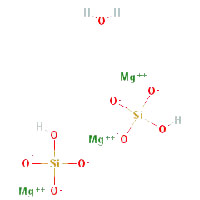Asbestos
TSCA Ten: Snapshots of the first 10 chemicals to be reviewed under the new TSCA
Date updated:
Summary: An overhaul in 2016 of the main U.S. chemical safety law, the Toxic Substances Control Act, required EPA to choose the first 10 chemicals for risk evaluation. Asbestos, one of the first 10 chemicals, is a known human carcinogen that continues to kill 10,000 Americans every year. While many of its uses have ceased, it is still used by the chlor-alkali industry and can be imported in certain products such as brake pads.
What kinds of products may use it?
- Insulation
- Vinyl flooring
- Roofing and siding
- Paint
- Coating/insulation for hot water pipes
- Automotive brake pads, brake linings, gaskets, and clutches
- Textiles treated to be flame retardant
- Asbestos cement (used for shingles or pipes)
What hazards does it pose?
- Known human carcinogen
- Asbestosis (non-cancerous disease caused by scarring of the lungs)
- Pleural disease (non-cancerous disease that thickens the lung membrane and causes fluid buildup)
Who may be exposed or most at risk?
- Workers and occupational bystanders in asbestos processing and chlor-alkali industries or using commercial products containing asbestos
- Individuals removing, disturbing, or handling old construction materials or auto parts containing asbestos
- Individuals living in asbestos-contaminated areas as a result of past industrial operations or improper demolition and disposal
Production profile (2015)
- U.S. manufacture (import only): 750,000 lbs
- Number of importers: 2
- Number of import sites: 2
What industries use it?
- Chlor-alkali (manufacture of chlorine and caustic soda/lye)
- Construction
- Automotive repair
- Adhesives and sealants
Asbestos additional resources
- EPA: Asbestos
- EPA: U.S. federal bans on asbestos
- Agency for Toxic Substances and Disease Control (ATSDR): Asbestos
- National Cancer Institute: Asbestos exposure and cancer risk
- EPA: Preliminary information on manufacturing, processing, distribution, use, and disposal [PDF]
- EPA: Scope of risk evaluation [PDF]
- EPA: Problem formulation [PDF]
Chemical snapshot

Asbestos can be found in some imported brake pads.

Credit: Chem ID Plus data base under the U.S. National Library of Medicine.










